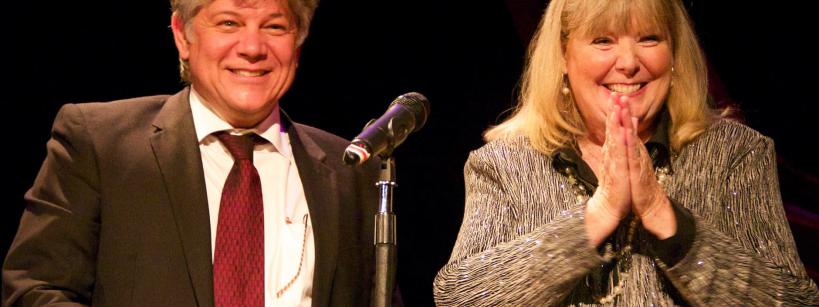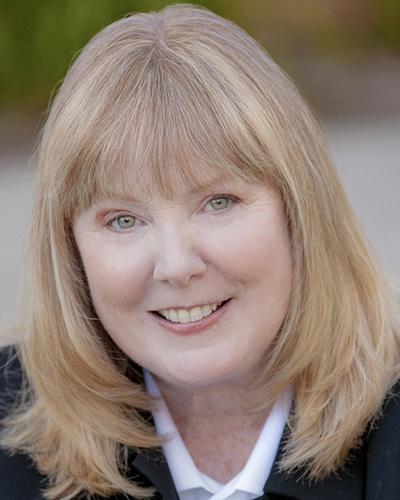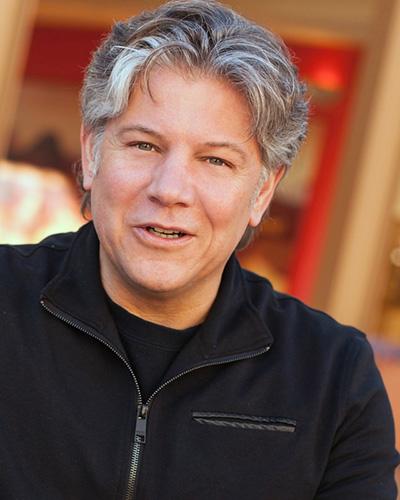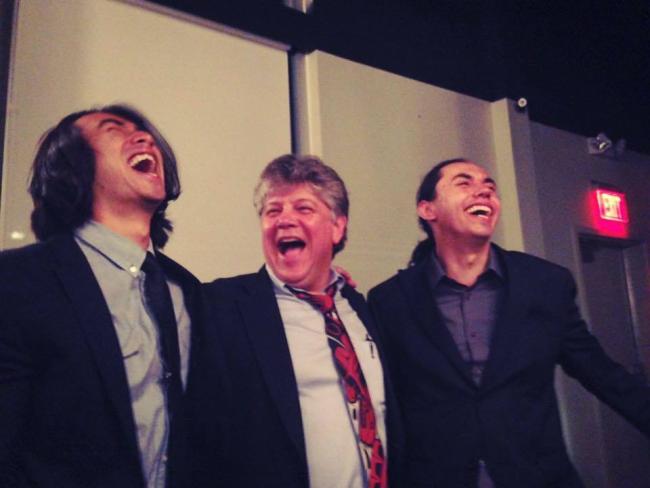Why did you start Native Voices? Has your vision changed over time?
Jean Bruce Scott (JBS): In 1993 we were asked to find a Native play that could be produced at Illinois State University. At that time there were very few Native written plays in print in the United States. We had both worked with theatre companies as actors in their new play development so we called everyone we knew from those experiences and asked people if they knew of any Native plays. These were literary managers and artistic directors of major theatres. They all said “no,” but if we found any to let them know. This started our search. We contacted Native Earth in Canada and started to reach out to scholars via the phone—the internet wasn’t so widely used or available back then. We also snail-mailed a Call for Scripts to individuals and scholars to solicit plays. Slowly but surely, they started to trickle in until we had about 30 plays—of those there were 5 to 10 that seemed like they might work for a college campus. We were asked to select 5 for a new play festival the following year.
Both: The vision is much the same. We want to create and support an arena where Native theatre can thrive. How we do that and where we direct our resources evolves to meet the needs of the artists.
Randy Reinholz (RR): We began Native Voices because of a vacuum of information available through traditional academic or professional arenas. When we asked other academics or theatre professionals about work from or with Native Americans, they didn’t know of any. There was almost nothing available in print. In 1994, we were hoping to find a script we could consider for production at Illinois State University, where we had few Native students, but an emerging Native American director (me). Since so little was in print, we identified some Native American playwrights and asked for scripts. When we brought the scripts and playwrights to campus for staged readings, we were excited by the impact of the stories. The stories resonated with our students, faculty, audiences and us personally.
Both: The most noticeable change that has happened over time is our ability to produce plays at higher artistic levels due to additional support for playwrights, actors, directors, and designers. Our set, lighting, sound, and projection design are at a level that’s equal to most, if not all, of the L.A. theatre community.
While we have developed the talent pool of playwrights and performers, both have grown exponentially. As the playwrights’ talents grew, their needs for traditional Native performance practices expanded, as did the demand for Native actors to develop traditional theatre skills to make them more competitive all around. Native Voices workshops and classes in scene study, acting Shakespeare, musical theatre, comedy, and improvisation have deepened the talent pool as well.
With Native theatre now in mainstream venues, theatres, and entertainment outlets, and a higher demand for Native theatre artists (especially Native actors), Native Voices at the Autry is poised to continue making important advancements to the field. We have worked with more than 300 accomplished Native artists at Native Voices who are now working consistently in the field. Our responsibility is to continue to develop and train playwrights and actors for this growing need.
Both: We believe that Native Voices at the Autry must be a place where Native theatre artists are:
- At the center of all decision-making regarding resource allocation, programming, and strategic thinking
- Provided opportunities for development and the acquisition of new skills
- Funded at a level to continue to create the most unique, powerful, and creative Native theatre in the United States
- Encouraged and supported as we evolve artistic processes that support aesthetic goals
As you reflect on decades of performances, retreats, workshops, and staged readings, can you think of a…
Happiest moment?
Both: Opening and closing nights are always happy events. We are thrilled to get the show open and share it with audiences. The last show of the run always leaves lasting impressions on all the collaborators associated with the show so that’s also a happy moment.
RR: I loved Jean’s retirement celebration. Moments that mark a long investment of time (25 years, a quarter of century) help contextualize what it means to dedicate one’s life to a specific goal. Supporting Native theatre artists is a fulfilling way to invest one’s life. In Jean’s case, it is half of her current working life. She was on the cover of Teen magazine at 14. After 25 years of acting and modeling, the next 25 years marked a time of investing in this community of Native artists. As Jean transitions into the next 25 years of curiosity, I look forward to what she sets her mind to investigate.
JBS: The 2017 season announcement for the Oregon Shakespeare Festival included Off the Rails by Randy and it was one of my happiest moments at Native Voices at the Autry. I say this because it was such a watershed moment for Native theatre. Identifying a Native play for their season—which would have the largest audience to date for a Native written play at a LORT theater (League of Resident Theatres)—gave other large theatres confidence to produce the Native plays they were considering. The audience for Off the Rails was over 22,000 people, many, if not most of them, seeing a Native written and themed play with Native actors in lead roles for the first time. The opening night performance was electrifying and we knew it was going to change the field dramatically. Over the next few months we heard from theater makers from across the country who had seen Off the Rails and were both thrilled and moved by the play and performances. It was highly entertaining and also taught the audience about the Indian Boarding Schools and the painful and lasting effect they’ve had on Native people. It was also about pride in one’s culture and tradition, and the resilience of Native people.
Surprising moment?
RR: I expect to be surprised as I face my own moving away from day-to-day leadership. I am thrilled by the possibility of what lies ahead for Native theatre and the artists that make it possible, and I am certain I can’t control or anticipate all the ways it will transform and expand.
JBS: William S. Yellowrobe, one of the playwrights at our very first Festival of New Plays in 1994, said that it was the first time a group of Native playwrights (5) had been invited to a festival together to workshop their plays with literary managers from numerous LORT theatres. It was the opportunity to talk with and relate to peers that was of interest. These playwrights were no longer the answer to an EDI mandate but rather the reason behind the festival. They were at the center of it.
Funniest moment?
RR: There are so many funny moments. We laugh often at NVA. We love the comedies of Drew Hayden Taylor and Arigon Starr. We laughed the whole time working and touring those shows. I love the moment captured in a photo that shows Román Zaragoza and Kholan Studi laughing with me after the opening of THEY DON’T TALK BACK by Frank Katasse. We laughed like that every day. Mentoring young artists is a deeply rewarding part of the journey for me. I am so proud of those two guys and the paths they have made for themselves.
JBS: I’m not sure how it came about, but we were rehearsing THE BUZ ‘GEM BLUES by Drew Hayden Taylor and we’d decided to incorporate a blues guitarist into the mix to help with transitions between scenes. We hired Nick Spear, an incredibly talented and funny musical theater actor and he was cracking us up with his inventions. The funniest was when one of the characters, an introverted, uptight male psychiatrist told another character he had to get home to his cat – and Nick, the musician howled out “What’s new pussycat? Whoa oh, oh oh, oh, ohhohh!” and then went straight into a Native American vocable immediately afterward. It made us howl with laughter and in performance it brought the house down!
Embarrassing moment?
RR: I am not often embarrassed at Native Voices. Of course, when I make mistakes and they become public, that is always a challenge. While my shortcomings are many, artists make lots of mistakes, if they take risks. So, I think I get used to taking risks, evaluating the results, and changing directions to do better next time. It is central to my process. I think I might describe my process as, research, plan, act, evaluate, pivot, and repeat until the product is thrilling and authentic. Listening to others is central to my process as well.
Inspiring moment?
Both: When artists associated with Native Voices shine on our stages and move on to other venues and arenas with grace and confidence to share with the world their gifts, stories, insights, and power.
RR: Native artists have so many gifts. To work in this moment when Native people can penetrate the systematic barriers and repression of the past is thrilling and exhausting. It’s an amazing time to make art. I am inspired by the perseverance of those who came before me and those in the middle of the struggle at this time. I am hopeful for the future and coming generations.
Have you observed a difference in Native Americans’ roles in theatre from when you first started Native Voices as compared to 2019?
RR: Native Americans in theatre when we first began in 1994 was a black hole. Theatre professionals constantly said there were no Native Americans in theatre. Early in my career as a professor, someone said, “But you really are not Native. Really. Look at your accomplishments.” As if being an accomplished theatre professional removed a person from being Native American and vice versa.
There are many more opportunities for Native theatre artists across the board. And, because of our workshops and advocacy I think there’s a greater awareness of the talent pool within the Native theatre community. We’ve worked really hard to bring decision makers to Native Voices to participate in what we’ve been doing and to see the work. They’ve taken ideas and artists back to their home theatres. There are also numerous Native theatre communities now from Anchorage to Juneau to Minneapolis to Los Angeles to Albuquerque to Hawaii to New York and so many places in between that continue to grow.
Both: In 2019, it has become fashionable for theatre professionals to regale others with their stories of working with Native American theatre artists or productions. We think that’s great! A major periodical in the field, AMERICAN THEATRE, dedicated a cover story to DeLanna Studi and her wonderful play, AND SO WE WALKED, which was developed at Native Voices at the Autry. DeLanna is a Native Voices Artists Ensemble member. Other articles were about Alaska Native theatre which Native Voices helped to grow and flourish, including a Native Voices production of THEY DON’T TALK BACK. Another American Theatre article was “Raising Native Voices, Then Amplifying Them” with the headline, “After years of nurturing writers and performers, the work of L.A.’s Native American theatre is finally paying off.”
What advice would you offer to a couple that lives and works together?
RR: Find time to end the work day and be with each other. Go for walks or do other forms of movement and DON’T TALK ABOUT WORK IN BED. Also, sort through what the other person needs to know and what they may not need to know. Ask others if they expect you to brief your partner or simply know the information you are reviewing. People often think if they tell Jean something, that I know it, and vice versa.
JBS: A practice we enjoy is taking an extra day before or after business trips to decompress and visit the city or area where we are working.
What advice would you offer to the next generation of leaders and innovators in theatre?
RR: Ask those who have come before what has been done. Don’t act like each Native person in theatre is the person between this moment and extinction. We are a powerful group of artists. Part of that power comes from being a community of artists, not just isolated mavericks.
JBS: Find ways to work together. Collaboration takes time but is essential in making great theatre. Becoming a better collaborator is essential to becoming a better artist.
What new projects or hobbies are you planning to pursue in the coming years?
RR: I have at least 12 months more with NVA and 5 more years at SDSU. I have several new scripts and a number of projects in the early stages of production. Since the funding is not complete, it is too soon to discuss them. Hobbies? Not sure. I like gardening, cooking, and spending time with friends and family. We love to travel. I would love to have some time to spend in several parts of the world. Jean and I once had a combination research trip and time to wander in England and Scotland (her points of origin) and loved it. We had a similarly relaxed research trip in Australia where we taught a World Indigenous Theater class for three weeks at Griffith University in Brisbane. We want more of those opportunities.
JBS: Although I’m retired from Native Voices I will always be connected to and interested in Native theater. There are a few plays we’ve been developing at Native Voices that I will be producing between now and May 2020. In my newfound spare time I’m going to read a lot (I’m Chair of the Stavis Award, a national theatre award for playwriting) and I plan to write about my experience in theatre, film and television. I’ve been in “the business” and working professionally since I was 14 years old. I’m planning on writing for myself and our family—but something public may come out of it about Native Voices in particular or perhaps about how to have a career in theater, film and television. I’m going to continue to work with writers I admire—Native and non-Native—from the theatre, film, television, academia and literature. I’m going to try to stay home as much as possible so I can raise a new puppy, garden, join local clubs and organizations and actually live in San Diego. It’s a beautiful city!



